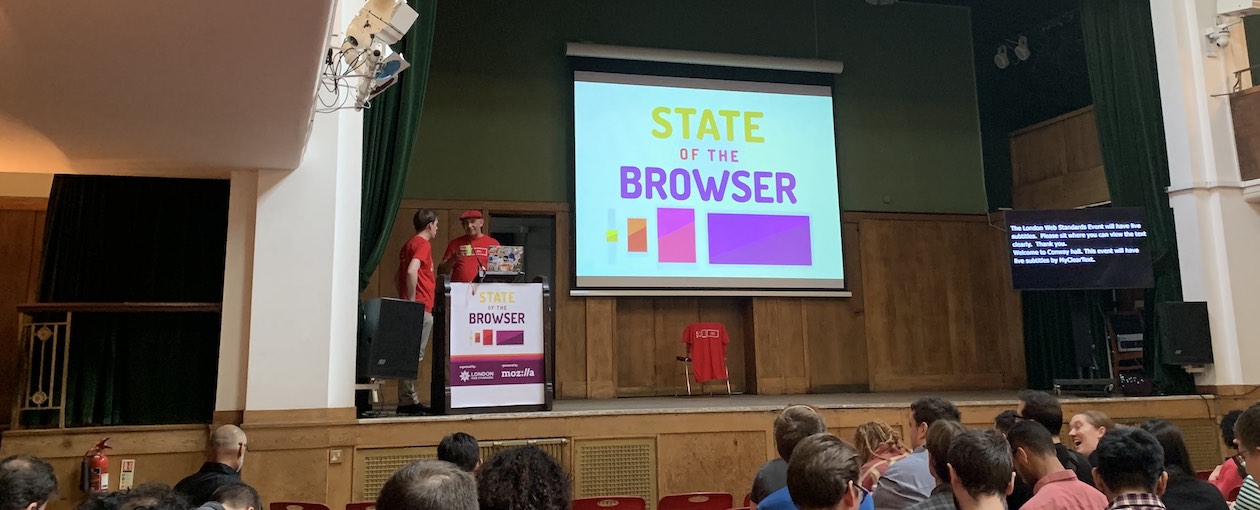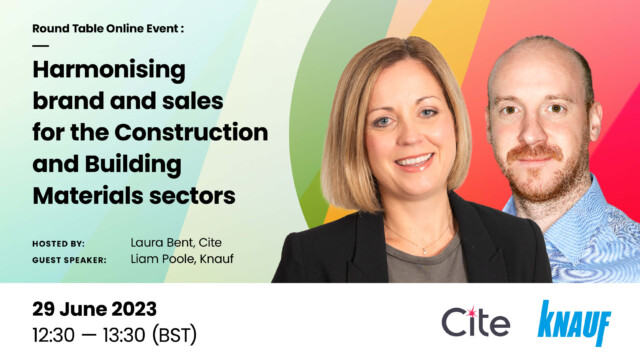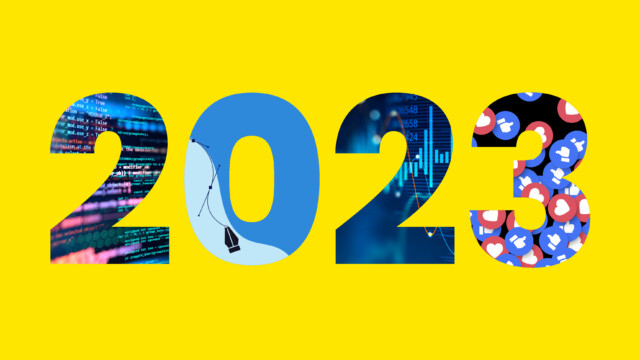State of the Browser 2019

Last year I attended State of the Browser 2018, a thoroughly enjoyable conference organised by London Web Standards. When I saw the announcement of the 2019 event, I was keen to return to the Conway Hall and also bring along some other members of the Cite team.
So, James, Matt and I boarded trains for the capital, eager with anticipation at a day of talks on web standards, accessibility and developing using best practices.
Bruce Lawson was first on stage with an engaging talk reminding developers to use semantic HTML and structured markup. He compared the role of a developer to that of a furniture maker, where the master of each discipline needs to fully understand and appreciate their raw materials – be it a piece of wood or HTML tag. The talk was also a reminder that the web is for everyone, not an elite few with the latest iPhone and high speed connection.
Up next was Sally Lait, a senior engineering manager at Monzo. I personally love the Monzo brand and product; and have heard a number of their employees speak at events since I went full Monzo last year. Sally’s talk was littered with brilliant real-world examples of how to help standards gain adoption across teams.
After a short break, Sanjay Purswani delivered a talk on the Accelerated Mobile Pages (AMP) framework. AMP has endured a hard time from the web standards community since its inception, with many uncomfortable at Google gaining further dominance of the web. However, Sanjay reminded us that AMP is open-source and other tech giants like Microsoft and LinkedIn are now utilising AMP viewers in their product line.
Andy Bell was next up with one of my favourite talks from the day. Using a combination of wit and colourful language, Andy’s talk centered on techniques to help make CSS scalable and manageable within large projects. One of the main points being a simple reminder to communicate with your colleagues. He also tipped me off to the fantastically named Lobotomised Owl CSS selector, one to check out!
Michelle Barker spoke at the event last year and is incredibly knowledgeable on the topic of CSS Grid. Her talk was full of tips for debugging CSS Grid layouts and touched on topics such as implicit tracks and CSS Subgrid – an upcoming standard that makes CSS Grid layouts even more flexible.
With lunch devoured it was straight back to the venue for the afternoon session. Laura Kalbag restarted things with a great talk on the fundamentals of web accessibility. There were some eye-opening statistics from WebAIM’s accessibility evaluation of the homepages for the top 1,000,000 websites.
Andy Davies then delivered an insightful talk on web performance, featuring many examples from his work as a consultant in this field. His talk went into detail on the analysis of a web page loading filmstrip and reminded people that the average internet device is not the latest £1,000 product from Apple.
Another quick break was followed by a fascinating talk from Melinda Seckington on upskilling developers within your team. As the leader of the technical team here at Cite, this session was of particular interest and contained many useful tips that we hope to explore further.
The final talk of the day was reserved for Andy Clarke. Andy is someone I have followed for years and I had been looking forward to his talk. Andy explored the history of grid-based design principles across magazine and print design, then gave examples of how these can transfer to the web. It was an absorbing talk and a wonderful end to a great day.
We’re already looking forward to SOTB20!



